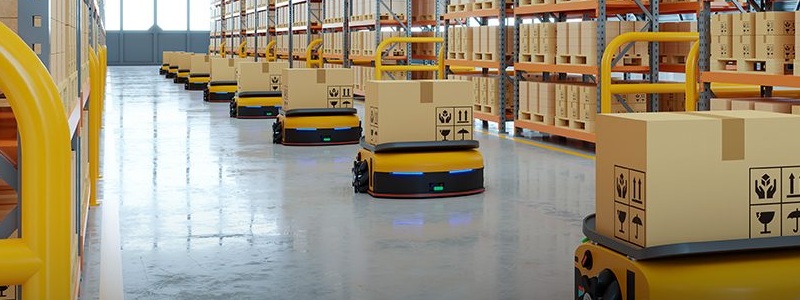From our 40 years of custom battery manufacturing experience, we know that selecting the correct welding technique for the job is crucial to the success of the product. We hope that by the time you finish this article you will understand why we use a certain battery welding technique for each of our battery packs.
Resistance welding
Alexander battery technologies has been using Resistance welding in various guises for nearly 40 years since the technology became mainstream. Whilst we have used various equipment from AC/DC power supplies to capacitor discharge equipment, our latest linear equipment has really improved our control of the process for battery welding; High Duty DC inverter power supplies with advanced closed-loop electrical modes and integrated database process control and data logging help us determine the best settings for the application.
Resistance welding is well known as the most cost-effective method for joining tabs on a wide range of cell types and sizes. It’s a cost-effective choice for welding nickel tab material up to 0.3mm thickness, and nickel or copper clad steel tab material to around 0.2mm, which is suitable for a wide range of requirements.
Resistance welding is normally used for low to medium current applications that consist of cylindrical or small prismatic cells, typically up to 20 -30A current rates depending upon the application, such as small handheld devices, small modules etc.
Resistance welding can be easily automated for extreme high-volume manufacturing but more commonly used in a semi-automatic environment.
Micro TIG (Tungsten Inert Gas Welding)
Micro TIG (Tungsten Inert Gas Welding), also known as pulsed arc welding, is our preferred method for challenging nonferrous, dissimilar material welding applications. Majority of cylindrical cell casings are manufactured from nickel plated cold rolled steel which is chemically compatible with copper making M-Tig the perfect choice for us.
M-TIG welding utilises a high frequency power supply, providing low current control and arc stability, this enables very fine welding and is useful for copper to cell joining. This makes it a good solution for buss bar welding that cannot be handled by resistance welding or would normally require a large power laser welder, various welds are possible up to and beyond the thickness of 0.5mm of pure copper.
Micro TIG is normally used when we require to weld low-impedance copper cell jointing plates for medium to high current applications again consisting of small to large cylindrical cells (30-200A) where low resistance is required for heat management.
We currently run the machines semi-automatic with pneumatic actuation, however we expect to automate this in the future. Happily, this can be easily automated by adding either an X/Y cartesian system or six axis robots for a more repeatable process on larger modules.
Laser welding
Although the technology has been around since the 80s, laser welding for batteries is still relatively new. Uptake is growing especially in the EV space.
Two laser types are a good choice for battery applications: pulsed Nd:YAG (neodymium-doped yttrium aluminium garnet, Nd:Y3Al5O12) and Fibre in three flavours (continuous wave (CW), Quasi continuous wave (QCW) & Nanosecond (NS) offering high speed repeatable welding and wealth of SPC and data gathering.
The most commonly used today generally being fibre in one flavour or another, the Nd:YAG laser still has its place for precision spot welding or sealing cell cans with minimum heat however, CW or modulated wavelength fibre is the sound choice for fine focus in battery pack manufacture, laser welding can be used for joining busbars to cells and tabs to busbars, laser welding provides a high degree of flexibility, welding both thin and thick tab materials, varied materials such as copper, aluminium, steel, and nickel, as well as some dissimilar material combinations. Welding tabs or terminal connections.
It is recommended that laser is the joining technology choice in any application with current requirements greater than 200A for long durations such as large prismatic packs, ESS, LEV & EV, also where noise, vibration, and harshness (NVH) is a consideration.
Ultrasonic welding
This method uses high-frequency ultrasonic vibration, normally around 20kHz , to join materials by creating solid state bonds when clamped. The frequency vibrations like those used for joining or melting plastics create shearing and plastic-like deformation between the metal surfaces. Combined together with a high clamping force this produces an atomic level bond.
The challenge in some cases here is that the clamping needs access from both sides of the join, with a sonotrode – which creates the ultrasonic vibrations – on one side and an anvil on the other. This works by passing the ultrasonic energy through the join in a highly focused area or areas. Ultrasonic welding can be used for multiple thin foils, dissimilar materials, or highly conductive materials such as aluminium or copper.
Ultrasonic welding is primarily used for flexible busbars and joining of pouch cells as the tabs are generally dissimilar metals and difficult to weld with other methods.
Wire bonding / ultrasonic wedge bonding
As the name implies this is another form of ultrasonic welding whereby the cell becomes the anvil and a thin wedge sonotrode provides the join, normally used with various thickness of wires for cylindrical cells, in some cases thin nickel or copper ribbon is used and in a prismatic pack can be used for the voltage sensing direct to PCB join.
This system is popular in EV and aerospace environments, however cell packaging must be robust for this application with noise, vibration and harshness taken into consideration.
To learn more about how Alexander Battery Technologies uses welding for each custom-made battery pack, contact us and we will be in touch with you.



 5 mins Read
5 mins Read  13/12/2022
13/12/2022 
